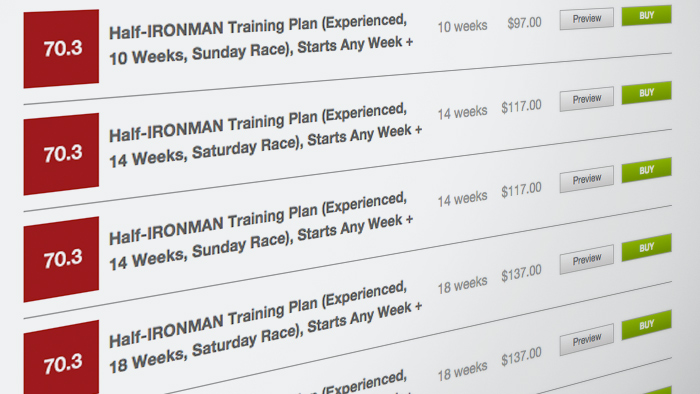Does this sound familiar?
“Can you coach me?” asks an athlete.
“I’d love, too,” you say. “But, I don’t have the time to take on any more clients.”
Or, maybe this?
“What do you think?” you ask a prospective athlete. “Do you want the gold or the platinum level coaching experience?”
“I’m sorry,” they say, “I need a coach, but I just don’t have the money for coaching right now.”
In a perfect world, every athlete would be paired with the perfect coach. The athlete and coach would work together in partnership to help the athlete reach their potential. The coach would learn about the athlete, develop a training program, integrate feedback and provide an appropriate amount of motivation for the athlete.
In reality, athletes have different wants and needs. Having a coach is a commitment that athletes may not want to make—or one that they can afford. Even if the athlete is being coached as part of a group, there is still the time commitment for group training and workouts that may not fit within their busy schedule.
On the other hand, athletes many not want to self-coach or “wing it” by doing whatever they feel like doing that day. It takes time to learn about their sport, and unfortunately there’s a lot of bad information out there, which could result in the athlete overtraining or becoming injured.
Training plans fit the space between coaching and self-coaching.
Think of your business as a pyramid.

The large base of the pyramid represents the greatest number of athlete interactions. By interaction, I mean that the athlete encounters something you’ve created. Examples of interactions at the pyramid base include the athlete reading your blog posts, subscribing to your newsletter, or watching one of your training videos on YouTube. At the lowest level of the pyramid, you have the potential to connect with hundreds, if not thousands, of athletes. The goal at this level is to interact with as many athletes as possible.
As shown in the diagram, there’s no money (or very little) at the bottom on a per athlete basis. Still, if you have millions of YouTube views, there is the possibility of making money at this level.
As you move up the pyramid, you interact with fewer athletes, but you interact with them at a deeper level. At the very top of the pyramid is a one-on-one coaching relationship. At this level, you can charge a lot of money for your services for an extended period of time. However, you will be limited in terms of how many athletes you can coach concurrently.
Training plans are in the sweet spot in between these two sections of the pyramid where you can charge a reasonable rate while attracting dozens or even hundreds of athletes.
What’s so powerful about training plans is that once you create them, there is very little cost in terms of time or money to service the plan. In my experience, most athletes will never contact you. They will simply purchase and use the plan.
The athletes who do contact you—either before or after purchasing the plan—are valuable because they provide feedback with their questions. How do you know if your workouts are easy to understand? You’ll know when a customer, or better yet multiple customers, ask you, “What does this mean?” You need this feedback to improve your business and identify new opportunities.
I’ve also observed that athlete needs and wants will change over time. A new triathlete may not want to spend a lot of money to pay for a coach, so paying a one-time fee for a training plan is more workable. Once the athlete becomes more competitive, they may switch to having a coach.
As an athlete, I worked with several different coaches over my 15-year triathlon career in between periods of self-coaching and periods of following training plans.
If you think of your interactions with the customer as a relationship and not as just a transaction, why wouldn’t you offer them a training plan when that’s what they want at that point in time?
Besides, selling training plans can be a tremendous source of income, it has been for me. You can make money and help athletes.
If you want to do what I’ve done and sell a lot of training plans, I encourage you to check out my new online course on TrainingPeaks University, “The Business of Training Plans.” I candidly share my methodology, lessons learned, best practices and tips for how I sell my training plans. My goal with the course is to help you as coaches create better training plans in order to help more athletes be successful in their sport. I’ll know I’ve been truly successful when you put me out of the training plan business.



